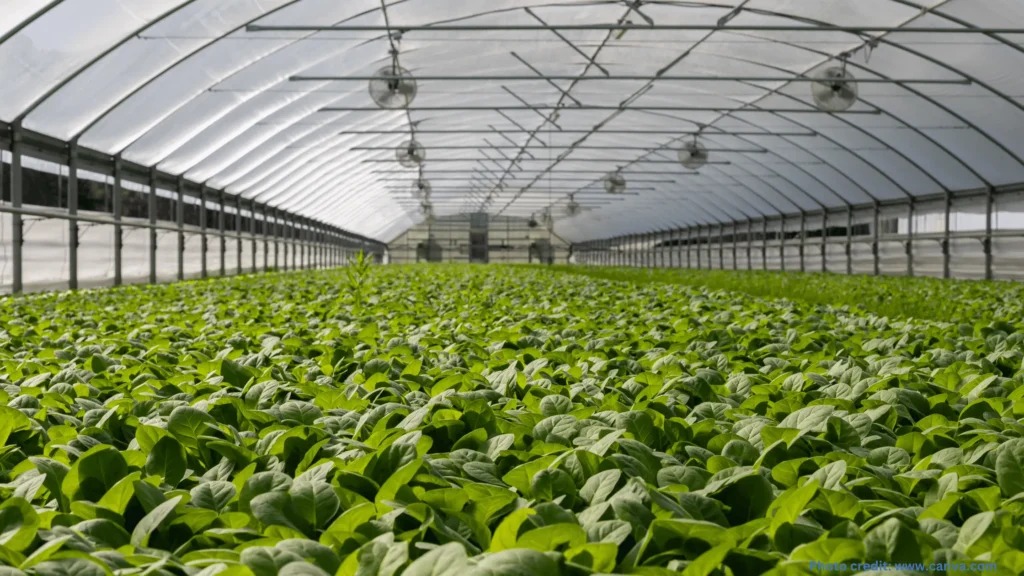The agriculture industry is experiencing rapid technological advancements, and greenhouse production is no exception. To remain competitive, many greenhouse operations are leveraging automation and data-driven tools to streamline production and improve efficiency. One such advanced system is the Picas Greenhouse Production System. Integrating it with Microsoft Dynamics 365 Business Central offers even more powerful advantages for greenhouse businesses. Here, we dive into how these two systems work together, what benefits they offer, and why they might be the perfect solution for greenhouse production management.
What is Picas Greenhouse Production System?
Picas Greenhouse Production System is a comprehensive software solution designed specifically for managing the unique needs of greenhouse operations. It offers a wide array of features that enable efficient management of tasks such as production planning, inventory control, order tracking, and labor management. This specialized system helps greenhouse managers maintain optimal productivity and quality by providing real-time insights into every aspect of the operation.
Developed with horticulture in mind, Picas integrates many critical greenhouse functions, from managing seed sowing and plant growth stages to ensuring orders are tracked and fulfilled efficiently. This level of control and visibility allows growers to optimize their resources, reduce waste, and maintain high standards of quality in their plants.
Why Integrate Picas with Business Central?
Microsoft Dynamics 365 Business Central is an ERP (Enterprise Resource Planning) solution that helps businesses manage finance, operations, sales, and customer service. By integrating Picas with Business Central, greenhouse operators can achieve a more holistic approach to business management.
The integration between these two systems enables a seamless data flow between the greenhouse production floor and business operations, enhancing visibility and accuracy across departments. For instance, when production data from Picas is synced with Business Central, it’s easier to track costs, manage budgets, and streamline financial reporting, making it possible to monitor the business’s health in real-time.
What Key Benefits Does the Picas-Business Central Integration Offer?
1. Improved Data Synchronization and Accuracy
In the fast-paced world of greenhouse production, errors in data can lead to delays and losses. The Picas-Business Central integration reduces the risk of these errors by automatically syncing data between the systems. This synchronization ensures that all data, from production schedules to financial records, is accurate and up-to-date.
With real-time data updates, greenhouse operators can quickly respond to production issues, adjust order volumes, and manage inventory levels with greater precision. Accurate data also supports better decision-making at every level, from production to sales and financial planning.
2. Streamlined Financial and Inventory Management
Integrating Picas with Business Central allows for centralized financial and inventory management. Business Central’s financial capabilities complement Picas’s production management features, offering greenhouse operators the ability to track costs related to seeds, fertilizers, labor, and equipment directly. This streamlined approach helps in analyzing expenses in detail, identifying cost-saving opportunities, and maintaining accurate financial records.
Inventory management is another area that benefits significantly from this integration. With synchronized data, managers can monitor stock levels in real-time, ensuring they have the necessary supplies while avoiding overstock situations. This level of inventory control is crucial in a business where inventory often includes perishable items.
3. Enhanced Order Processing and Customer Satisfaction
The Picas and Business Central integration provides a unified order management system that helps manage the entire sales cycle. Orders can be placed, tracked, and fulfilled more efficiently as the systems work together to ensure seamless processing.
Customers today expect fast and accurate service, and the integration allows greenhouse operators to meet these expectations. For instance, sales teams can access up-to-date information on production availability and order statuses directly within Business Central. This immediate access allows them to provide customers with reliable information, enhancing overall satisfaction and loyalty.
4. Optimized Production Planning and Labor Allocation
Greenhouse production is labor-intensive, and efficiently managing labor resources is essential to profitability. Picas helps greenhouse managers plan production tasks and allocate labor effectively based on the needs of different plant varieties and growth stages. When integrated with Business Central, labor costs and schedules can be tracked with financial data, allowing for better control over labor expenses.
Optimized production planning ensures that resources are allocated effectively, leading to higher productivity and reduced labor costs. This approach minimizes bottlenecks in production and improves yield, ultimately impacting the profitability of the operation.
5. Advanced Reporting and Analytics Capabilities
Both Picas and Business Central offer robust reporting and analytics, but their combined capabilities bring even more value. Integrated data means that greenhouse operators can analyze key performance indicators (KPIs) across production, sales, finance, and labor in a unified dashboard.
With access to holistic data insights, decision-makers can identify trends, assess production efficiency, and implement strategic adjustments quickly. This data-driven approach supports continuous improvement, allowing greenhouse businesses to stay agile and competitive in a rapidly evolving market.
How Can Greenhouse Operations Implement Picas and Business Central?
Step 1: Evaluate Your Business Needs
The first step is understanding the specific needs of your greenhouse operation. Consider the areas where automation or improved data visibility can make a significant impact, such as labor management, inventory control, or financial reporting. Collaborating with consultants specializing in greenhouse software can be beneficial for conducting a needs assessment.
Step 2: Plan for Integration and Customization
No two greenhouse operations are exactly alike, so planning for integration should include customizing the Picas-Business Central setup to fit the unique requirements of the business. Working with a knowledgeable implementation partner can help you define and configure workflows, data mappings, and integrations that align with operational goals.
Step 3: Train Staff and Monitor Progress
To make the most of this integration, it’s crucial to ensure that staff is well-trained in using both Picas and Business Central. Conduct regular training sessions and encourage employees to become comfortable with the systems’ features. Monitoring progress post-implementation helps identify any challenges early and ensures a smooth transition.
What Is the Future of Greenhouse Operations with Picas and Business Central?
As the agriculture industry continues to adopt more digital solutions, greenhouse operations that leverage integrated systems like Picas and Business Central will have a competitive edge. These systems not only streamline operations and enhance productivity but also provide data-driven insights that support sustainable growth and improved customer satisfaction.
In the future, we can expect more advanced features to emerge, including AI-driven predictive analytics, IoT integrations for real-time plant health monitoring, and enhanced automation tools. Greenhouse businesses that embrace these technologies will be better equipped to meet evolving customer demands, improve operational efficiency, and remain competitive in an increasingly digital market.
In conclusion, integrating the Picas Greenhouse Production System with Microsoft Dynamics 365 Business Central can transform greenhouse operations by improving data accuracy, optimizing resource management, and enhancing customer service. As technology continues to evolve, the role of integrated systems in greenhouse production will only become more critical, paving the way for a more efficient, sustainable, and profitable future in agriculture.








